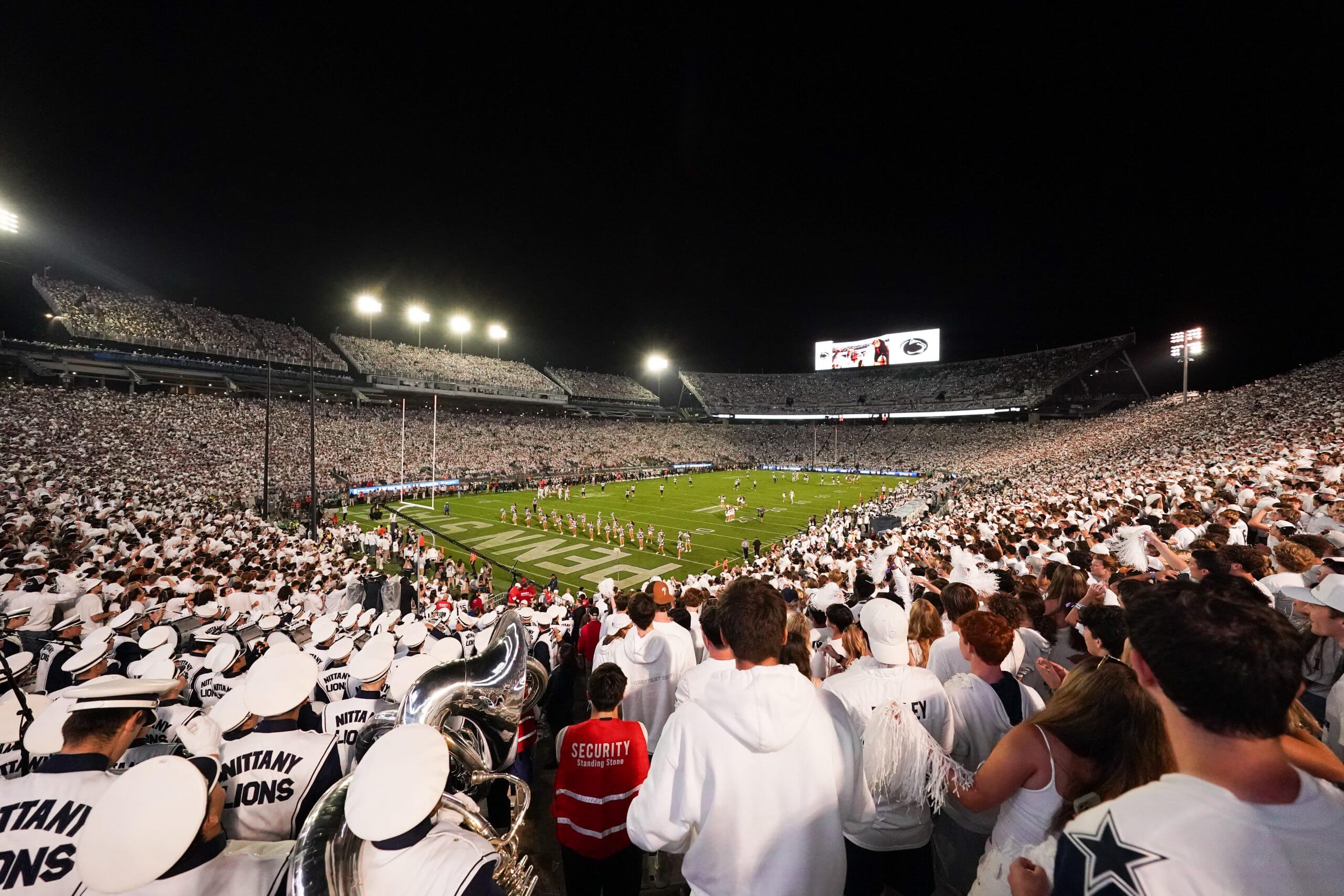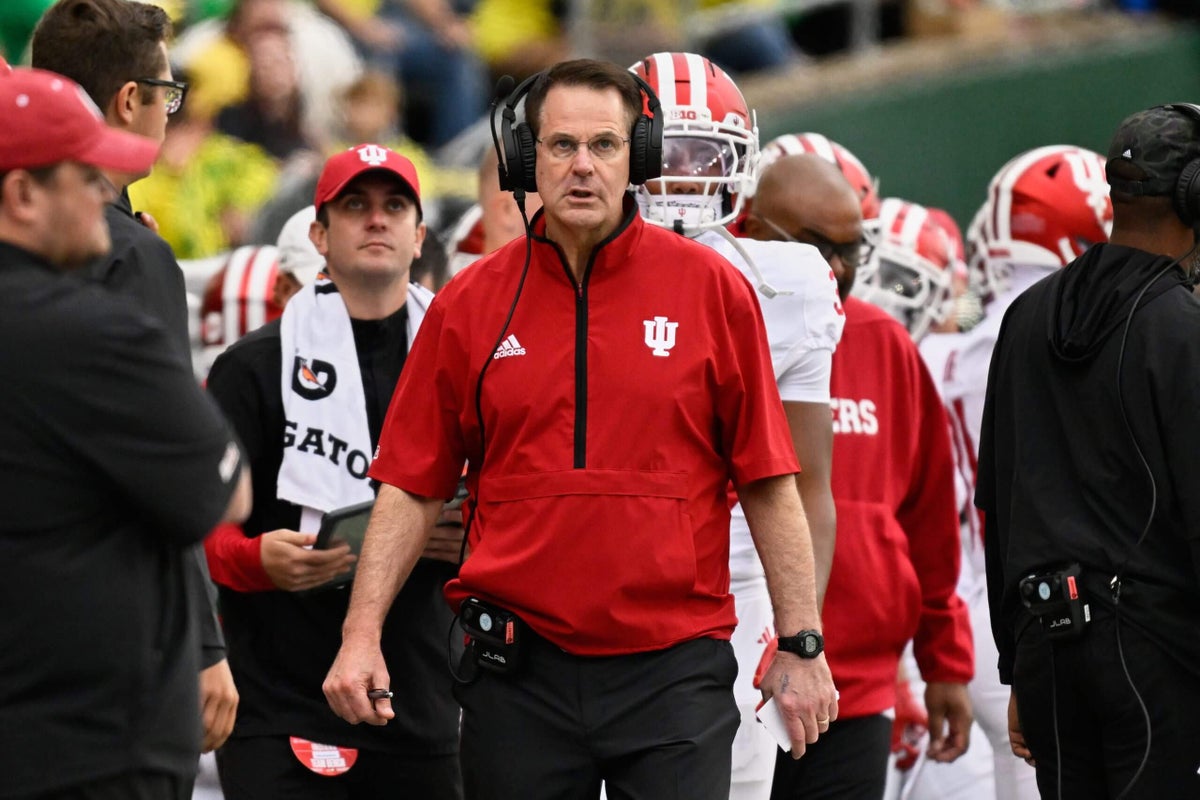One of the fun parlor games of college football is to have very strong opinions about where coaches should ply their trades. We all love to play matchmaker.
Outside of college football, this is a plainly bizarre thing to do; I’ve never once taken aside my mailman and said, “You know, you’d make more money and have a higher quality of life if you moved yourself and your entire family six states over.” But we all like to believe that the right coach, and the right job, at the right time, can fix everything.
You just have to find the right fit.
The only way this works is if there is a clear linear progression. There are tiers of jobs for coaches to take, a ladder to climb, and plotting a course through those tiers is half the battle. I’m not sure I’d use “Do what Urban Meyer did” as a model for navigating one’s way through life, but he’s the canonical example of how to construct a (college) coaching career. He took over Bowling Green at 37, moved to Utah, got promoted to Florida and ended up at Ohio State. That’s how you’re supposed to do it: Keep taking one step up until you find yourself at the top. That’s what we try to do in our own careers. This is what being “upwardly mobile” is all about.
But just when you think you have it all figured out, the rug has a way of being pulled out from under you. What was a prestige job a decade ago is a dead-ender today. That odd little startup in your friend’s garage can become a billion-dollar company out of nowhere, the job you thought you’d have the rest of your life gets absorbed into a mega-conglomerate and suddenly someone your kid’s age is starting a sentence with, “While we’re certainly appreciative for everything you’ve done for this company… ”
The world shifts. The only constant is change.
And this past college football weekend, two mammoth events happened.
1. Penn State fired coach James Franklin after the Nittany Lions lost two games in a row in which they were favored by more than 20 points. The school did so despite a $45 million buyout it will pay him to not coach, which is more money than Joe Paterno’s entire salary over his 45-year coaching career.
2. Indiana traveled to Oregon and didn’t just beat a team that was the No. 1 seed in last year’s College Football Playoff and hadn’t lost a regular-season game in two years. It won convincingly, not with trickery or good fortune. The Hoosiers simply went into Eugene and looked better. Indiana moved up to No. 3, its highest poll ranking ever, and will be favored to win every game the rest of the regular season.
These two events have converged into a logical, and familiar storyline: Coach Curt Cignetti, the maestro of Indiana’s resurgence, should go coach Penn State.
He was one of two obvious frontrunners in Bruce Feldman’s look at potential Franklin successors, alongside Nebraska coach — and Penn State alum — Matt Rhule. How could Cignetti not be? This is the classic Meyer archetype. Cignetti’s journey is one from Indiana (Pa.), to Elon, to James Madison, to Indiana … to Penn State? Keep taking one step up until you find yourself at the top.
But: Is this what Cignetti should do? Or has the rug shifted out from under him? From all of us?
That we are even discussing the possibility of the head coach of Indiana — which is traditionally the sort of team that, if it beats you at home, will inspire you to fire your coach — turning down Penn State is remarkable. There hasn’t been a time in the history of these programs when the answer to the question of “what’s the better job, Penn State or Indiana?” was not obvious, except for during the worst abuse scandal in college football history. But there are equally strong arguments for him to stay and to go, and those arguments are inevitably tied up with the dramatic changes in the world of college football.
I’m honestly not sure what I would do.

Penn State’s Beaver Stadium is the second-largest venue in college football. (James Lang / Imagn Images)
The case for Cignetti going to Penn State if offered is straightforward.
First, it’s Penn State. Have you ever been to a game at Beaver Stadium? No offense to Memorial Stadium, a lovely place to see a game, but Indiana just sold its whole allotment of student tickets this year for the first time. Penn State has a massive, almost manically dedicated fan base that is never going anywhere; we have proof this is a program that can survive anything. There is so much money in this program that the school can pay a coach $45 million to go away two weeks after most fans were still leaving their holiday plans open for CFP travel. The Nittany Lions have money, fans and tradition. This is a crown jewel of college football.
But look around! Look at the AP Poll! Texas Tech and Indiana are in the top 10; Vanderbilt, Virginia and South Florida are in the Top 25. Penn State, Michigan, Florida State, Clemson and Florida? They’re nowhere to be found. (And Texas just got back in.) In the SP+ ratings by ESPN’s Bill Connelly, the gap between the top eight teams and the 9-25 teams is smaller than it has been in a decade.
The name, image and likeness era has closed the gap between blue bloods like Penn State (and Oregon, for that matter) and teams like Indiana. The non-traditional powers can offer players funds and quick transfers, which means they can offer opportunities to both rising mid-major stars and all those backup blue-chip recruits who used to be stuck waiting years for their turn to play at powerhouses.
You may like that, and you may not, but there is no doubt that it has made it harder to sustain the depth of talent coaches once had at Penn State (something that’s affecting teams like Georgia as well) and has made it easier to make a run at a school like Indiana.
And not just a run: Cignetti surprised everybody last year, and he’s doing it again this year, but it’ll be easier next year and moving forward now that we all take Indiana seriously. (If Indiana doesn’t have the season it had last year, does it have Cal transfer quarterback Fernando Mendoza now?)
It’s not like Indiana can’t pay Cignetti either; his salary this year is roughly what Franklin’s was. (He even has a more expensive buyout!) And it’s also tough to make a case that Cignetti wouldn’t have a more relaxing life in Bloomington than he would in Happy Valley. Have you seen Franklin in the past few years? Has he looked like a guy living a carefree, chill life to you? He had the vibe of a guy who could squeeze a brick into juice. Is this an experience you would ever want in your life?
James Franklins last walk from Beaver Stadium.
The 12-year coach was fired today, per @PeteThamel pic.twitter.com/0hvPs9Bfdy
— Collin Ward (@wardcollinz) October 12, 2025
Cignetti — who, it should be said, probably would never be described as “chill” himself — can stay in Bloomington (a wonderful town in its own right) and be a legend.
Who knows where college football is going in the next few years? Worried about a Super League? If so, Penn State, which gets dramatically better television ratings than Indiana, is going to be far better positioned. Do you have to account for that? Don’t you have to?
Then again, Cignetti, despite being new to most college football fans, is further along in his journey than you might think. At 64, he is the second-oldest coach in the Big Ten. (His first coaching job was as a grad assistant at Pitt the year after Dan Marino left.) How much is that guy going to be sweating a Super League? He’s here to win now.
It’s not so cut-and-dried that Penn State is a better place to win now than Indiana, is it?
That may be the bigger takeaway here, bigger even than psychoanalyzing what Cignetti’s decision might be. A reasonable person could decide that coaching at Indiana is better for their life, and their family’s life, and even their short- and long-term success, than coaching at Penn State.
There have been so many changes in the world of college football over the past half-decade. But is there really one bigger than that?
